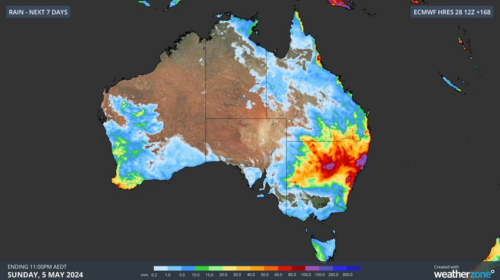Could the first back-to-back La Nina event occur this year? The Pacific Ocean has been in a neutral phase since the last La Niña came to an end back in March of this year. This means that both ocean and atmospheric conditions across the equatorial Pacific are currently acting normal for this time of year, with neither La Niña nor El Niño in place.
But forecast models suggest that La Niña could redevelop during the second half of 2021, potentially opening the door to the first back-to-back La Nina event in a decade.
According to the US Climate Prediction Centre (CPC), neutral conditions are likely to persist in the Pacific Ocean through the rest of the Southern Hemisphere winter and into spring. However, the organisation then gives a 66 percent chance of La Niña occurring by the three-month period from November 2021 to January 2022.
While Australia’s Bureau of Meteorology are yet to join the CPC in issuing a La Niña Watch, they do acknowledge the potential for La Niña later in the year.
The latest climate driver update from the Bureau states that neutral conditions are likely to persist in the Pacific Ocean during the rest of the Southern Hemisphere’s winter, while “two models forecast temperatures reaching the La Niña threshold during September.”
La Niña typically causes above average rain over large areas of Australia during winter, spring and early summer. It can also cause an early start to Australia’s northern wet season and typically boosts the number of tropical cyclones seen in the Australian region between November and April.
The increased rainfall and cloud cover during La Nina events, reduces solar output across much of the country, particularly across the eastern states.
The abundant moisture and cloud typically reduce daytime temperatures in spring and summer. Overall extreme temperatures during spring and summer are less frequent for this reason, particularly for the southern coastal cities Melbourne and Adelaide.
However, an increased frequency of heatwaves is likely for these cities, although they are generally not as extreme.
Overall, La Nina reduces wind power and wind across southern Australia, as it is correlated with longer periods of the positive phase of the Southern Annular Mode (SAM). Research has shown that positive SAM events occur four times as often during La Niña.
To recap what the SAM is, it is an index that measures the north-south displacement of the westerly winds that flow between Australia and Antarctica.
When the SAM is in a negative phase, westerly winds and cold fronts are located further north than usual, which typically causes more cold outbreaks and increased wind power and rainfall for southern Australia.
On the other hand, positive SAM phases can generate heatwaves and reduce wind power and rainfall for southern Australia, during spring and summer.
Unfortunately, the SAM is much harder to predict at the seasonal scale compared to the other two climate drivers mentioned above. The SAM has just shifted into a negative phase which is expected to continue through the next fortnight. The SAM can only be predicted up to two weeks out, particularly when there is no major climate driver in the mix.
As the season unfolds, we will be keeping a close eye on the horizon here at Weatherzone. For more information, please contact us at business@weatherzone.com.au.






